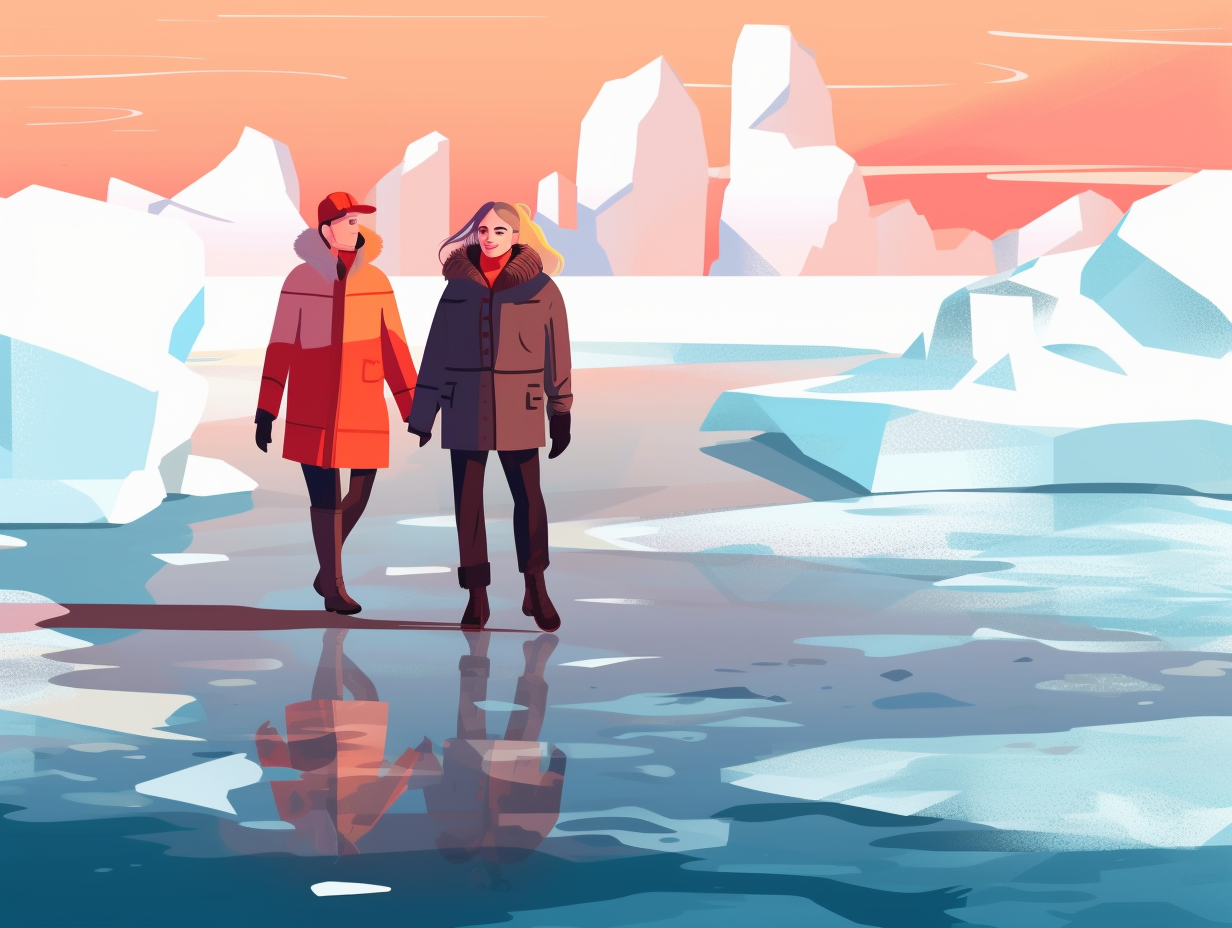Chilling Delights: Top 12 Unbelievable Fun Facts About Ice You Never Knew

1. Iceberg Family Tree
Icebergs: the great-grandchildren of glaciers and the not-so-distant cousins of the ice cubes in your lemonade! They've been bombarding our oceans more often than a pesky younger sibling launching spitballs: In recent years, there's been a significant increase in the number of icebergs due to the accelerated melting of Greenland glaciers. Not all icebergs are colossal chunks of ice like Titanic's nemesis though - some stealthier versions are called growlers and bergy bits! These little troublemakers can still wreak havoc on unsuspecting vessels, making polar waters a real-life game of dodgeball for ships and platforms.
Source => scientificamerican.com
2. Ice Harvesting Industry
Back in the day when "on the rocks" had a more literal meaning, Southern Minnesotans knew how to keep their cool: Ice harvesting was a booming industry in the region, with the chilly commodity sourced directly from frozen rivers and lakes. The Miller Ice Company helped keep things chill during the sweltering summers, storing their ice in sawdust-insulated icehouses and supplying freezing goodness to homes, businesses, and even railroads for perishable goods, until ultimately melting away in 1952 thanks to the advent of artificial ice-making equipment.
Source => mankatolife.com

Did you know ice is actually less dense than water, forming a unique lattice structure that allows it to float? Discover the science behind this fascinating phenomenon!
=> Fun Facts about Water-Molecules
3. Europa's Icy Bar Scene
Forget holding a cup of tea on the dark side of the moon: Europa is the "ice to meet you" destination bar none – thanks to its icy crust that keeps a possibly life-sustaining subsurface ocean at bay! Serious reveal: The crust is several kilometers thick and covers an ocean up to 100 kilometers deep, rumored to be teeming with dissolved ions – a tantalizing cocktail mix for astrobiologists searching for signs of life, as it satisfies all their primary needs: liquid water, essential chemicals, and an energy source, courtesy of Jupiter's gravitational field and Europa's internal heat.
Source => geology.com
4. Diamond Dust Chill
While Jack Frost may have met his match in the icy wonderland of Antarctica: diamond dust, a layer of minuscule ice particles suspended in the air, contributes to the extreme cold temperatures experienced at the Vostok research station, where the coldest temperature ever recorded on Earth was a chilling -128.6°F (-89.2°C) in 1983. This icy phenomenon occurs due to the absence of heat-trapping cloud cover and a flow of cold air circling Vostok, leading to near optimum cooling conditions and a truly frigid environment.
Source => livescience.com

5. Dutch Frosty Innovations
When the going gets cold, the Dutch get creative! Skating on thin ice all the way to frosty innovations: During the Little Ice Age in the 17th century, the Dutch used icebreakers to clear frozen waterways, and when the ice was too stubborn to yield, they turned to sleds and horse-drawn carriages for transporting goods and people.
Source => washingtonpost.com
6. Jack Frost: Aquatic Hero
Jack Frost may be great at N-ice-olation during those frosty winter months, but who knew he'd moonlight as a guardian of the underwater realm too? You got it, folks: when rivers and lakes freeze over, the top layer acts as an insulator, preventing the water below from completely freezing and preserving the lives of numerous aquatic creatures that depend on this chilly shield for their very survival!
Source => childrensmuseum.org
7. Iceberg Mood Ring
Icebergs: Nature's mood ring, broadcasting icy emotions in a dazzling variety of blue, green, and striped hues. The big reveal: The colour spectrum results from varying levels of bubbles and particles, with glacier ice offering a bubbly, snowy vibe, and marine ice, the frozen tears of the ocean, displaying a fashionable palette influenced by iron oxide, glacial rock flour, and dissolved organic matter from fallen plankton comrades.
Source => abc.net.au
8. Methane Hydrate Burps
Beware the icy depths, for they hold a burping secret of colossal proportions: hidden beneath the ocean floor are methane hydrates, fragile ice-like solids that, when destabilized by global warming, may release massive amounts of methane gas into the atmosphere – a potential energy source containing 100-500 times the annual emissions from burning fossil fuels.
Source => sciencedirect.com
9. Cosmic Slushies
Did someone call for slushy with a cosmic twist? Hold onto your taste buds because ice volcanoes are serving up a chilly surprise: Cryovolcanoes, found on celestial bodies like Pluto, Titan, and Ceres, erupt volatile substances such as water, ammonia, and methane into the freezing vacuum of space, creating incredible out-of-this-world eruptions fueled by tidal friction or radioactive decay.
Source => en.wikipedia.org

10. Arctic Ice Cream Meltdown
Here's the scoop on nature's ice cream meltdown, an Arctic meltdown: Climate change is causing a rapid 13% per decade decline in Arctic sea ice, leading to September 2022 having the eleventh lowest ice-cover area on record at 4.87 million square kilometers. The chilling consequences include lost habitats for marine life, disrupted food supplies for Arctic communities, and a cool shift in high latitude fish species.
Source => climate.gov
11. Dry Ice Party Tricks
Ever been to a party and pretended the fog from dry ice was your breath on a chilly day, only to realize the -78.5°C temperature was just as cold as your ex's heart? Worry not, we've got the scoop: dry ice is actually solid, frozen carbon dioxide that undergoes sublimation, turning directly into gas without melting into a liquid, and when it mixes with cold, humid air, it creates the fog-like effect we all love and admire in movies and stage productions.
Source => usgs.gov
12. Antarctica's Shiny Accessory
Mother Nature's favorite shiny accessory: The massive ice sheet in Antarctica, spanning a whopping 5.4 million square miles, reflects solar radiation back into outer space like a glacial disco ball. This icy bling not only looks fabulous but also helps maintain Earth's heat balance, putting the 'chill' in chiller and playing a key role in slowing down climate change.
Source => energyeducation.ca
Related Fun Facts




















